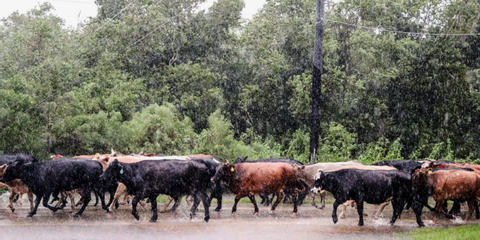Federal funding programs are under review as of 1/27/25. We'll make updates as new info is released.
The Livestock Forage Disaster Program (LFP) provides payments to:
-
Eligible livestock owners and contract growers who have covered livestock and
-
Who are also producers of grazed forage crop acreage (native and improved pasture land with permanent vegetative cover
-
Or certain crops planted specifically for grazing) that have suffered a loss of grazed forage due to a qualifying drought during the normal grazing period for the county.
LFP also provides payments to:
-
Eligible livestock owners or contract growers that have covered livestock and
-
Who are also producers of grazed forage crop acreage on rangeland managed by a federal agency if, the eligible livestock producer is prohibited by the federal agency from grazing the normal permitted livestock on the managed rangeland due to a qualifying fire.
The qualifying drought and qualifying grazing losses, and/or notification of prohibition to graze Federal land due to fire, must have occurred in the grazing period and crop year.
Enterprises
Eligibility
Eligible Counties for Drought
An eligible livestock owner or contract grower who, as a grazed forage crop producer, owns or leases grazing land or pastureland physically located in a county rated by the U.S. Drought Monitor as having a:
-
D2 (severe drought) intensity in any area of the county for at least eight consecutive weeks during the normal grazing period is eligible to receive assistance in an amount equal to one monthly payment;
-
D3 (extreme drought) intensity in any area of the county at any time during the normal grazing period is eligible to receive assistance in an amount equal to three monthly payments;
-
D3 (extreme drought) intensity in any area of the county for at least four weeks during the normal grazing period or is rated a D4 (exceptional drought) intensity at any time during the normal grazing period is eligible to receive assistance in an amount equal to four monthly payments; or
-
D4 (exceptional drought) in a county for four weeks (not necessarily four consecutive weeks) during the normal grazing period is eligible to receive assistance in an amount equal to five monthly payments.
A map of eligible counties for LFP drought can be found here.
Eligible Livestock
Eligible livestock are grazing animals that satisfy the majority of net energy requirement of nutrition via grazing of forage grasses or legumes and include such species as alpacas, beef cattle, buffalo/ bison, beefalo, dairy cattle, deer, elk, emus, equine, goats, llamas, reindeer or sheep.
Within those species animals that are eligible include those that are or would have been grazing the eligible grazing land or pastureland:
-
During the normal grazing period for the specific type of grazing land or pastureland for the county; or
-
When the federal agency prohibited the livestock owner or contract grower from having livestock graze the normally permitted livestock on the managed rangeland due to fire.
Eligible Livestock must:
-
Have been owned, leased, purchased, entered into a contract to purchase, or held by a contract grower during the 60 days prior to the beginning date of a qualifying drought or fire condition;
-
Have been sold or otherwise disposed of due to a qualifying drought condition during the current production year or one or both of the two production years immediately preceding the current production year;
-
Have been maintained for commercial use as part of a farming operation on the beginning date of the eligible drought or fire condition;
-
Not have been produced and maintained for reasons other than commercial use as part of a farming operation (such excluded uses include, but are not limited to, wild free-roaming animals or animals used for recreational purposes such as pleasure, hunting, pets, roping or for show); and
-
Not have been livestock that were or would have been in a feedlot on the beginning date of the qualifying drought or fire as part of the normal business operation of the livestock owner or contract grower.
Eligible Producers
To be eligible for LFP, persons or legal entities must be a U.S. citizen, resident alien, partnership of U.S. citizens, a legal entity organized under State law, or an Indian tribe or tribal organization defined in the Indian Self Determination and Education Assistance Act that:
-
Own, cash or share lease, or be a contract grower of covered livestock during the 60 calendar days before the beginning date of a qualifying drought or fire;
-
Provide pastureland or grazing land for covered livestock, including cash-rented pastureland or grazing land as of the date of the qualifying drought or fire that is either:
-
Physically located in a county affected by a qualifying drought during the normal grazing period for the county; or
-
Rangeland managed by a federal agency for which the otherwise eligible livestock producer is prohibited by the federal agency from grazing the normally permitted livestock because of a qualifying fire.
-
-
Certify that they have suffered a grazing loss because of a qualifying drought or fire; and
-
Timely file an acreage report for all grazing land for which a grazing loss is being claimed.
Terms
Payments
FSA will calculate LFP payments for an eligible livestock producer for grazing losses because of a qualifying drought equal to payment factors of one, three, four or five times the LFP monthly payment rate. The LFP monthly payment rate for drought is equal to 60 percent of the lesser of either the monthly feed cost:
-
For all covered livestock owned or leased by the eligible livestock producer; or
-
Calculated by using the normal carrying capacity of the eligible grazing land of the eligible livestock producer.
Total LFP payments to an eligible livestock owner or contract grower in a calendar year for grazing losses will not exceed five monthly payments for the same kind, type, and weight range of livestock.
In the case of an eligible livestock owner or contract grower who sold or otherwise disposed of livestock because of drought conditions in one or both of the two previous production years immediately preceding the current production year, the payment rate will equal 80 percent of the monthly payment rate.
FSA will calculate LFP payments for eligible livestock owners or contract growers for losses suffered because of a qualifying fire on federally managed rangeland for which the producer is prohibited from grazing the normally permitted livestock. The payment begins on the first day the permitted livestock are prohibited from grazing the eligible rangeland and ending on the earlier of the last day of the federal lease of the eligible livestock producer or the day that would make the period a 180 calendar-day period. The payment rate is 50 percent of the monthly feed cost for the number of days the owner or contract grower is prohibited from having livestock graze the managed rangeland because of a qualifying fire, not to exceed 180 calendar days.
Payments Limitation
The Agriculture Improvement Act (2018 Farm Bill) established a maximum annual per person and legal entity payment limitation for LFP (without regard to any other program) of $125,000.
Therefore, for 2019 and subsequent program years, no person or legal entity, excluding a joint venture or general partnership, may receive, directly or indirectly, more than $125,000 total in payments under LFP. The average adjusted gross income (AGI) limitation relating to limits on payments for persons or legal entities, excluding joint ventures and general partnerships, with certain levels of AGI will apply. Specifically, a person or legal entity with an AGI (as defined in 7 CFR Part 1400) that exceeds $900,000 will not be eligible to receive LFP payments.
Direct attribution provisions apply to LFP. Under direct attribution, any payment to a legal entity will also be considered for payment limitation purposes to be a payment to persons or legal entities with an interest in the legal entity or in a sub-entity. To learn more, visit the Payment Eligibility and Payment Limitations fact sheet at fsa.usda.gov/payment-limitations.
Application Instructions
Eligible livestock producers who are also producers of grazed forage crop acreage must provide a completed application for payment and required supporting documentation to their FSA office within 30 calendar days after the end of the calendar year in which the grazing loss occurred.
Contract growers must include a copy of the grower contract and any other supporting documents required for determining contract grower eligibility.
Supporting documents must show evidence of loss and that grazing land or pastureland is owned or leased. If a loss of grazing was due to a fire that the eligible livestock producer was prohibited by the federal agency from having livestock graze the normal permitted livestock on the managed rangeland due to a fire. FSA will use data provided by the applicant to determine eligibility for program benefits.
Providing the data is voluntary; however, without all required data, program benefits will not be approved or provided.
Resources
2025 Program Year Livestock Forage Disaster Program Maps (PDF files)
Related Programs
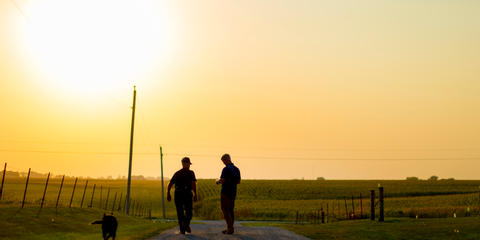
Direct Farm Operating Loan
Farm Service Agency
- Loan
- General
- Equipment
- Animal Purchase
- Diversification
- Marketing
- Processing
- Feed
- Seed
- Fertilizer
- Cash Rent
- Housing
- Construction
- Infrastructure
- Repairs
- Pest Management
- Storage
- Legal & Finance
- Water Management
- Waterway Protection
- Water Quality
- Conservation
- Training
- Immigrants
- CSA
- Refinancing
- Reduced Tillage
- National
- Any
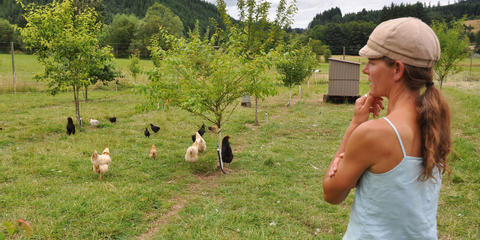
Environmental Quality Incentives Program (EQIP)
Natural Resources Conservation Service
- Grant
- Cost Share
- Conservation
- Cover Crops
- Forest Management
- Certified Grassfed
- Irrigation
- High Tunnel
- Certified Organic
- Air Quality
- Alternative Energy
- Soil Health
- Wildlife & Pollinator Habitat
- Water Quality
- Weather
- Research
- Landscape
- Precision Ag
- Drought
- Nutrient Management
- Carbon Capture
- Fencing
- Agroforestry
- Grazing Management
- Reduced Inputs
- National
- Any
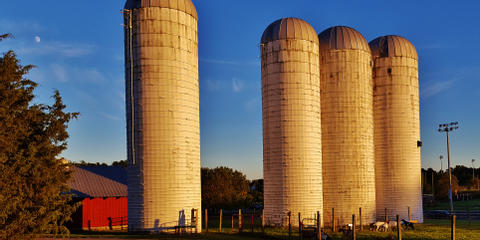
Farm Storage Facility Loan Program (FSFL)
Farm Service Agency
- Loan
- Infrastructure
- Equipment
- Storage
- Lighting
- Delivery Vehicle
- National
- Oilseeds
- Peanuts
- Pulse Crops
- Hay
- Honey
- Biomass
- Fruits
- Vegetables
- Floriculture
- Hops
- Maple Sap
- Milk
- Cheese
- Yogurt
- Butter
- Eggs
- Rye
- Aquaculture
- Poultry
- Livestock
- Grains
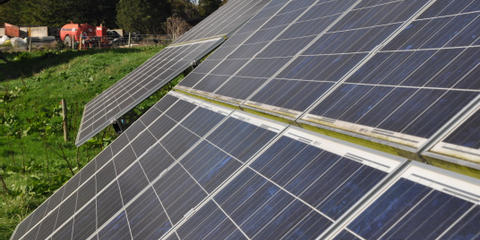
Rural Energy for America Program (REAP)
Rural Development · Closed Sep 30
- Grant
- Cost Share
- Loan
- Alternative Energy
- Biofuel
- Equipment
- Infrastructure
- Conservation
- Solar Power
- Wind Energy
- Hydro Power
- HVAC
- Lighting
- Irrigation
- National
- Any
Details
Organization
Financial Instrument
Grant
Updated December 4, 2025
Image Credit: U.S. Department of Agriculture
This information was gathered from public sources. Ambrook is not responsible for or able to affect the results of any financial programs listed, nor are they responsible for any incorrect information that is listed or is on the hyperlinked external sites. All information is subject to change.
Explore hundreds more programs on Ambrook.
